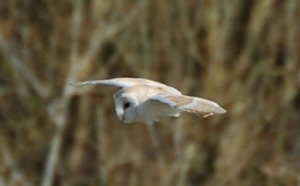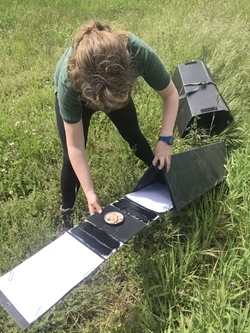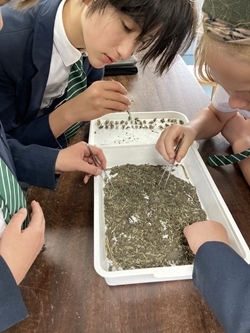 Wednesday 4 August is International Owl Awareness Day. Barn owls are amongst the most enigmatic and beloved of British birds, and scientists at the Owl Box Initiative are trying to understand them better. Although not an endangered species, the barn owl is a top predator and key indicator of biodiversity health. Creating farmland habitats where their prey can thrive, should in turn benefit barn owls and help many other species too.
Wednesday 4 August is International Owl Awareness Day. Barn owls are amongst the most enigmatic and beloved of British birds, and scientists at the Owl Box Initiative are trying to understand them better. Although not an endangered species, the barn owl is a top predator and key indicator of biodiversity health. Creating farmland habitats where their prey can thrive, should in turn benefit barn owls and help many other species too.
The community project being run by the Game & Wildlife Conservation Trust is working with 100 farmers across Hampshire, Wiltshire and Dorset to provide extra nesting sites and carefully monitor the owls to find out what they like to eat and how and where they like to hunt. It aims to inspire the farmers, their families, and wider communities to work for the barn owl.
So, this International Owl Awareness Day, why not let the Owl Box Initiative inspire you to find out more about barn owls. The project website is full of information and resources for parents and teachers to help young owl fans learn more about these super-cool birds. See owls inside their nest box with our Owl Box Live nest cam videos, or find information on habitats favoured by barn owls, advice on siting and building a barn owl box, as well as fascinating facts on barn owl ecology and diet. And now youngsters can also try ecology first-hand with our free Small Mammal Ink Tracking activity.
 Barn owls are at the top of the food chain. They catch and eat small mammals such as field voles, common shrews and wood mice, and typically eat about four every night – that’s 1,460 per year! The Owl Box Initiative scientists have been monitoring how many small mammals are present in the areas where the barn owls live by using ‘small mammal ink tunnels’. Now owl enthusiasts can make their own, using just household objects and snacks, and see what creatures are visiting their garden or school grounds. Find instructions at owlboxinitiative.com/resources
Barn owls are at the top of the food chain. They catch and eat small mammals such as field voles, common shrews and wood mice, and typically eat about four every night – that’s 1,460 per year! The Owl Box Initiative scientists have been monitoring how many small mammals are present in the areas where the barn owls live by using ‘small mammal ink tunnels’. Now owl enthusiasts can make their own, using just household objects and snacks, and see what creatures are visiting their garden or school grounds. Find instructions at owlboxinitiative.com/resources
Since early 2021, a nest cam, live streamed to the internet, has been giving the team, and the public, a remarkable insight into the domestic arrangements of a barn owl family. Now that the three owlets have fledged, you can watch highlights from the owl family's time in residence, from when the pair began to bond, to the female laying her eggs, the male bringing her food and the female with her tiny owlets. The videos are available at owlboxinitiative.com/owl-box-live
Follow the Owl Box Initiative on Twitter for regular updates @OwlBoxInit
Inspiring schools
 Year 7 at the Stroud School in Romsey have been following Owl Box Live and wanted to learn more about barn owls. They decided to investigate barn owl pellets. Barn owls eat their small mammal prey whole and what they cannot digest is regurgitated in the form of a pellet, full of tiny bones and hair. The students sifted through some barn owl pellets, identifying small mammal prey by the size and shape of the skulls they found.
Year 7 at the Stroud School in Romsey have been following Owl Box Live and wanted to learn more about barn owls. They decided to investigate barn owl pellets. Barn owls eat their small mammal prey whole and what they cannot digest is regurgitated in the form of a pellet, full of tiny bones and hair. The students sifted through some barn owl pellets, identifying small mammal prey by the size and shape of the skulls they found.
Did you know?
- You won’t hear a barn owl hoot. They emit an eerie screech while hunting.
- The barn owl’s heart-shaped facial disc collects sound, contributing to their extraordinarily sensitive hearing (the most acute of any animal tested), which allows them to find tiny prey in total darkness.
- Their light body (250-350g), large wings and soft feathers allow them to fly very quietly. But they are not very waterproof and can get soaked in heavy rain.
Find out more fascinating barn owl facts at owlboxinitiative.com/barn-owl-ecology
Become a Friend of the Owl Box Initiative
The Owl Box Initiative is a community project, relying heavily on local volunteer ornithologists to monitor owls on farms across three counties. The project team is keen to create a network of barn owl enthusiasts to help promote barn owl conservation throughout the UK. Become a Friend of the project, free of charge, to receive regular project updates and advice, and share any habitat creation efforts or barn owl sightings with the team. Find out more about becoming a Friend of the project at owlboxinitiative.com/become-a-friend
Notes to editors
The Game & Wildlife Conservation Trust – providing research-led conservation for a thriving countryside. The GWCT is an independent wildlife conservation charity which has carried out scientific research into Britain’s game and wildlife since the 1930s. We advise farmers and landowners on improving wildlife habitats. We employ more than 60 post-doctoral scientists and other research staff with expertise in areas such as birds, insects, mammals, farming, fish and statistics. We undertake our own research as well as projects funded by contract and grant-aid from government and private bodies.
For information, contact:
Eleanor Williams
Telephone: 07592 025476
Email: press@gwct.org.uk